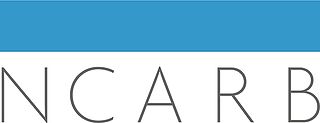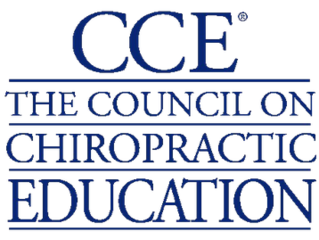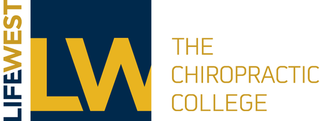
Chiropractic is a form of alternative medicine concerned with the diagnosis, treatment and prevention of mechanical disorders of the musculoskeletal system, especially of the spine. It has esoteric origins and is based on several pseudoscientific ideas.
The National Council Against Health Fraud (NCAHF) was a not-for-profit, US-based organization, that described itself as a "private nonprofit, voluntary health agency that focuses upon health misinformation, fraud, and quackery as public health problems."
The United States Medical Licensing Examination (USMLE) is a three-step examination program for medical licensure in the United States sponsored by the Federation of State Medical Boards (FSMB) and the National Board of Medical Examiners (NBME). Physicians with a Doctor of Medicine (MD) degree are required to pass the USMLE for medical licensure. However, those with a Doctor of Osteopathic Medicine degree (DO) are required to take the COMLEX-USA (COMLEX) exams.

Life University is a private university focused on training chiropractors and located in Marietta, Georgia, USA. It was established in 1974 by a chiropractor, Sid E. Williams.
The National Association for Chiropractic Medicine(NACM) was a minority chiropractic association founded in 1984 that described itself as a "consumer advocacy association of chiropractors". It openly rejected some of the more controversial aspects of chiropractic, including a basic concept of chiropractic, vertebral subluxations as the cause of all diseases. It also sought to "reform the chiropractic profession away from a philosophical scope of practice and towards an applied science scope of practice." It stated that it was "dedicated to bringing the scientific based practice of chiropractic into mainstream medicine" and that its members "confine their scope of practice to scientific parameters and seek to make legitimate the utilization of professional manipulative procedures in mainstream health care delivery." "While the NACM is focused on furthering the profession, its primary focus is on the rights and safety of the consumers." The NACM was the object of much controversy and criticism from the rest of the profession. It quietly dropped out of sight and its demise apparently occurred sometime between May 30, 2008 and March 6, 2010.

The National Council of Architectural Registration Boards (NCARB) is a nonprofit corporation comprising the legally constituted architectural registration boards of the 50 states, the District of Columbia, Guam, the Northern Mariana Islands, Puerto Rico, and the U.S. Virgin Islands as its members. Its mission is to collaborate with licensing boards to facilitate the licensure and credentialing of architects to protect the health, safety, and welfare of the public.
Southern California University of Health Sciences (SCU) is a private university located in Whittier, California and specializing in the health sciences. Academics are organized into four colleges and schools: the Los Angeles College of Chiropractic, the College of Eastern Medicine, and the College of Science & Integrative Health. The university is accredited by the WASC Senior College and University Commission.

The National Board of Chiropractic Examiners (NBCE) is a non-profit national and international testing organization for the chiropractic profession that develops, administers, analyzes, scores, and reports results from various examinations. Examinations are offered to students at chiropractic colleges accredited by the Council on Chiropractic Education (CCE). The NBCE maintains its headquarters in Greeley, Colorado. The organization was established in 1963 to standardize chiropractic testing requirements as opposed to each state having its own board exam. Since 1963, all but one of states have adopted the passage of Parts I-IV; however, each state has its own licensing requirements in addition to the NBCE exams.

The Council on Chiropractic Education (CCE) is an American agency recognized by the United States Department of Education for accreditation of programs and institutions offering the Doctor of Chiropractic degree. The CCE seeks to ensure the quality of chiropractic education in the United States by means of accreditation, educational improvement, and public information. The CCE develops accreditation criteria to assess how effectively programs or institutions plan, implement, and evaluate their mission and goals, program objectives, inputs, resources, and outcomes of their chiropractic programs. The CCE is also recognized by the Council for Higher Education Accreditation (CHEA) and is a member of the Association of Specialized and Professional Accreditors (ASPA).
Chiropractic education trains students in chiropractic. The entry criteria, structure, teaching methodology and nature of chiropractic programs offered at chiropractic schools vary considerably around the world. Students are trained in academic areas including scopes of practice, neurology, radiology, microbiology, psychology, ethics, biology, gross anatomy, biochemistry, spinal anatomy and more. Prospective students are also usually trained in clinical nutrition, public health, pediatrics and other health or wellness related areas.

The history of chiropractic began in 1895 when Daniel David Palmer of Iowa performed the first chiropractic adjustment on a partially deaf janitor, Harvey Lillard.While Lillard was working without his shirt on in Palmer's office, Lillard bent over to empty the trash can. Palmer noticed that Lillard had a vertebra out of position. He asked Lillard what happened, and Lillard replied, "I moved the wrong way, and I heard a 'pop' in my back, and that's when I lost my hearing." Palmer, who was also involved in many other natural healing philosophies, had Lillard lie face down on the floor and proceeded with the adjustment. The next day, Lillard told Palmer, "I can hear that rackets on the streets." This experience led Palmer to open a school of chiropractic two years later. Rev. Samuel H. Weed coined the word "chiropractic" by combining the Greek words cheiro (hand) and praktikos.
The Federation of State Medical Boards (FSMB) of the United States is a national non-profit organization that represents the 71 state medical and osteopathic boards of the United States and its territories and co-sponsors the United States Medical Licensing Examination. Medical boards license physicians, investigate complaints, discipline those who violate the law, conduct physician evaluations, and facilitate the rehabilitation of physicians where appropriate. The FSMB's mission calls for "continual improvement in the quality, safety and integrity of health care through the development and promotion of high standards for physician licensure and practice."
Sports chiropractic is a specialty of chiropractic. It generally requires post-graduate coursework and a certification or diplomate status granted by a credentialing agency recognized in a practitioner's region.
The Association of New Jersey Chiropractors online directory was created to help users make informed decisions about chiropractic care in New Jersey. It lists over 2000 chiropractors in the state of New Jersey for easy reference. The directory also contains several general articles about chiropractic, links to public health initiatives such as the Straighten Up New Jersey campaign, offers a monthly chiropractic newsletter, as well as lists the licensing requirements for New Jersey chiropractors.

The World Federation of Chiropractic (WFC) (French: La Fédération Mondiale de Chiropratique (FMC); Spanish: La Federación Mundial de Quiropráctica (FMQ)) is an international consulting body representing chiropractic to the international health care community.
The International Federation of Sports Chiropractic is an international organization which promotes sports chiropractic around the world. It is composed of national sports chiropractic councils, or national associations, from many countries such as Australia, Canada, Chile, Japan, Mexico, Spain, Turkey, United States, and the United Kingdom.

The International Chiropractors Association (ICA) was founded by B.J. Palmer in 1926 in Davenport, Iowa, US. Palmer served as it President until his death in 1961.

Health professional requisites refer to the regulations used by countries to control the quality of health workers practicing in their jurisdictions and to control the size of the health labour market. They include licensure, certification and proof of minimum training for regulated health professions.

Life Chiropractic College West is a private chiropractic school in Hayward, California, US, known for its Doctor of Chiropractic degree program. Founded as Pacific States Chiropractic College in 1976 by George E. Anderson, the name was changed in 1981 to its current form after a merger with Life Chiropractic College.










